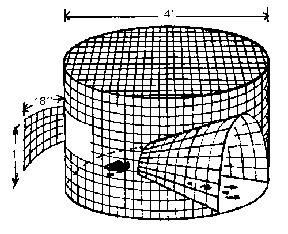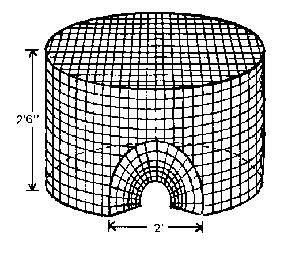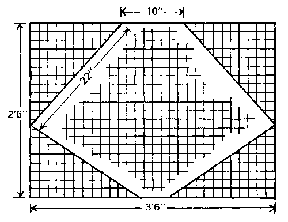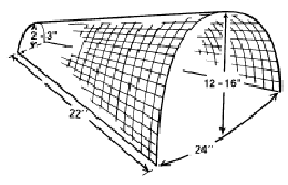| | It seems a paradox that one of the most clever and most beautiful members of the bird family Corvidae (also includes jays, crows and ravens) could also be a serious pest. Unfortunately, the magpies’ carnivorous habit presents a problem when it preys on beneficial wildlife, inflicts injury on young livestock and spreads livestock disease. Ultimately, there may be a need for some type of control.
The beneficial aspects of the magpie must also be considered when control programs are designed and employed. The role of magpies as scavengers and consumers of insects is well documented by several studies, and these beneficial aspects must always be taken into account.
In some cases, control is restricted to trapping when other methods are not desirable or practical. However, many hunters, farmers and naturalists will acknowledge that the magpie, because of its wily and wary nature, is a bird that is seldom easy to shoot or trap. The trapping technique outlined in this factsheet has proven to be substantially more efficient and successful than other traps, because of the trap’s unique circular design.
There are no control devices or chemicals registered for controlling magpies. However, trapping the birds in a nuisance situation may be considered.
About Magpies
Feeding habits
During winter (December-March), magpies feed chiefly on carrion, plus some small mammals and a considerable amount of grain and vegetable matter. In springtime (April-May), insects are the main dietary component, with considerable animal matter and carrion second. Very little grain and vegetable matter is consumed at this time.
During the summer months, magpies eat a considerable number of insects, miscellaneous animal matter and wild fruit. During fall (September - November), insects, wild fruit, grain and animal matter are consumed.
Carrion is not a significant constitutent of the magpie diet during summer and fall. The food material fed to young magpies is 90 per cent animal matter. Magpies have a keen sense of smell for rancid food, sick animals, etc. and depend a great deal upon their own habits as scavengers to obtain food, rather than following specific, predictable feeding patterns.
Consequently, farm sites that are kept free of waste, food materials, carrion, animal matter, debris, open garbage, etc. in close association with temporary water holes are not likely to be attractive to magpies as permanent feeding grounds.
Migration
Although magpies are a common winter resident in central and southern Alberta, migration may occur in varying degrees, depending on the need to escape severe winter conditions. Sporadic movements of magpies to areas of more abundant food occur frequently in winter in Alberta.
Population dynamics
Magpies tend to live in colonies varying in size from single pairs to several hundred birds. The size of the colony will vary from year to year, and the size of the territory occupied by a given colony is not necessarily directly related to the size of the colony. Locations of colonies will change abruptly and regularly. Records of longevity for magpies raised in captivity can show a lifespan of more than 20 years.
Relationship to man
Magpies usually need and are quick to take advantage of the increased food supplies that human settlement brings. It is rare that human concentration reaches a point where magpie numbers are threatened unless direct artificial reduction is employed. When magpie numbers are reduced deliberately, they recover rapidly when the pressure is removed. Consequently, local control programs in specific areas do not jeopardize the general status of this bird.
Procedures in Setting Traps
- Determine the best place for positioning the trap, preferably where magpies congregate or near their flyway.
- Place draw-bait in a suitable location. Large bones, beef heads, fat, dead rabbits or any frozen carcasses and offal may be used as draw-bait.
- Place the trap in close proximity to the draw-bait, allowing birds to become accustomed to the trap. Leave bait and trap separate for one or two days until magpies accept the bait.
- Place trap over the bait and stake it down. Position the bait in front of the inner end of thetunnel but well away from the outer wall of the trap. Small amounts of bait should be placed in the entrance to entice birds to enter.
- Note: The above operations should be carried out late in the day to avoid disturbing the routine of the magpies.
- A daily check should be made near evening and any trapped birds disposed of humanely. Any evidence of feathers, blood, etc. should be carefully removed. If trapping is successful, one or two live magpies may be left in trap overnight to act as decoys.
- If no results are obtained after several days, the trap should be moved to a new location and the above procedures repeated.
Magpie Trap
Circular design
- 1 length of 1/4" reinforcing rod - 12' 8"
- 1 piece 1 in2 mesh mink wire 30" x 12' 8"
- 2 pieces, 1 in2 mesh mink wire 30" x 48" (cut to fit top).
- 1 piece 1 in2 mesh mink wire 30" x 42" (cut and tapered for funnel).
- 3 stakes approximately 10" long with "U" shaped heads.
Directions for construction
- Bend 1/4" rod in circle and weld. Attach rod to bottom of wire, crimp wire around rod and secure with several short pieces or "ties" using flexible haywire.
- Cut out tunnel as shown in Figure 3, and form into conical shape as illustrated in Figure 4.
- Fit cone to inside of trap wall at ground level, making sure the base of tunnel is parallel to and resting on ground. Attach securely with wire "ties".
- Cut out wall of trap according to size of tunnel opening.
- Cut rectangular opening 1" x 1' 6" on three sides at back of trap, leaving the fourth side as hinge.

Figure 1.

Figure 2.
Note: Stucco wire may be substituted if 16 gauge mink wire is unavailable. However, an additional reinforcing rod would be required around the top of the trap.

Figure 3.
General "setting" information
Magpies may be trapped year-round, but the ideal trapping time is during the cold winter months when carrion is less readily available and birds require more food to sustain life. Any suitable draw-bait such as meat scraps, small dead animals, offal, etc. may be used to bring magpies into a given area. The importance of choosing a proper bait location and the use of draw-baits for several days before actually setting the trap cannot be stressed too highly.

Figure 4.
Best results will be obtained if the trap has a "weathered" or old appearance, as magpies are suspicious of shiny material.
Allow a one or two-day period of successful pre-baiting before placing the trap over the bait and staking the trap down.
Position the bait in front of the inner end of tunnel, but well away from the outer wall of the trap.
Prepared by:
John Bourne
Source: Agdex 685-3. Revised July 2005. |
|